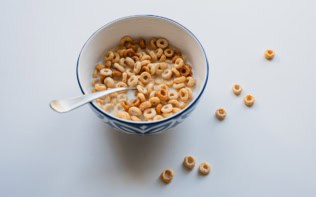
This edition of the Red Folder has gone to the birds – or more precisely, to the raptors.
First up is the news that peregrine falcons have evolved the natural equivalent of eyeliner to help them hunt.
Fans of American football know that players will smear dark makeup below their eyes to reduce glare when they are trying to catch fast-moving balls. Peregrine falcons have similar patterns of dark feathers below their eyes — called malar stripes – and it had been long thought that they perform a similar function. However, definitive proof had been lacking.
Now, Michelle Vrettos, Chevonne Reynolds and Arjun Amar of the University of Cape Town have found good evidence that these stripes did indeed evolve to reduce glare. The trio studied over 2000 photographs of peregrines taken in 94 locations around the world by citizen scientists. They found a strong correlation between the strength of sunlight in a location and the size and darkness of malar stripes of birds at that location.
“The solar glare hypothesis has become ingrained in popular literature, but has never been tested empirically before,” says Vrettos. Amar points out that the falcons were ideal subjects for such a study because they are widespread throughout the world and therefore have evolved in a wide range of sunlight conditions.
They describe their research in Biology Letters.
Fly like an eagle
The combination of lightweight electronics like GPS and ubiquitous mobile phone networks have been a boon to researchers studying the behaviour of some animals in the wild. In a recent study, scientists in the US used such a tagging technology to closely monitor the flight of a golden eagle as it travelled along the Appalachian Mountains from Alabama to New York. As well as logging the bird’s location, the instruments measured the bird’s altitude, groundspeed and triaxial acceleration.
After taking local wind conditions into consideration, Kasey Laurent and Gregory Bewley at Cornell University and colleagues found that the eagle’s inflight accelerations have a highly irregular, fluctuating pattern that resembles particle trajectories in turbulent flows. The team then used a simple linear model explain the relationship between the eagle’s acceleration and the intensity of the turbulence it experienced.
Instead of being a hindrance to efficient flight, the team believes that eagles could use turbulence as a source of energy while flying. They also say that the performance of some aircraft in turbulence could be improved by studying the flight of birds such as the golden eagle.
The study is described in PNAS.



